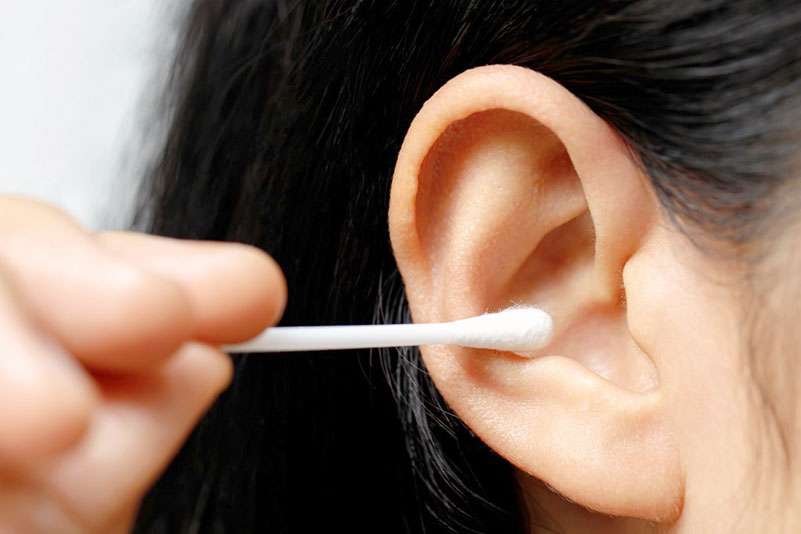Earwax removal by a health care provider 416
by Admin
Posted on 01-08-2022 02:09 PM

Your health care provider can remove excess wax by using a small, curved tool called a curet or by using suction techniques. Your provider can also flush out the wax using a syringe filled with warm water and saline or diluted hydrogen peroxide.
:max_bytes(150000):strip_icc()/ear-cleaning-salons-open-around-tokyo-57287008-5b5b3ea046e0fb0025f5e878.jpg) Medicated
ear
drops may also be recommended to help soften the wax, such as carbamide peroxide (debrox earwax removal kit, murine ear wax removal system). Because these drops can irritate the delicate skin of the eardrum and ear canal, use them only as directed. If earwax buildup continues, you may need to visit your health care provider once or twice a year for regular cleaning.
Medicated
ear
drops may also be recommended to help soften the wax, such as carbamide peroxide (debrox earwax removal kit, murine ear wax removal system). Because these drops can irritate the delicate skin of the eardrum and ear canal, use them only as directed. If earwax buildup continues, you may need to visit your health care provider once or twice a year for regular cleaning.
If you’ve been denied nhs ear wax removal services in england, we encourage you to write to your local mp and ask them to take action on your behalf. Mps can lobby the local providers of healthcare, the clinical commissioning group (ccg), and seek to influence relevant policies from the department of health and social care. We’ve provided a suggested outline for a letter below. To make this as powerful as possible and encourage your mp to take action, it’s essential you outline the local problems that you’ve faced – so there’s a section where we suggest you write about: your experience what support you were denied by the nhs.
Earwax can be removed by applying peroxide-based ear drops, like debrox, to soften the wax and then flushing out the ear with a saline solution a few days later. Health care providers might use a suction device. People are advised to talk to a health care provider before treating earwax buildups on their own to ensure they are using a safe method. Doctors advise against sticking anything inside the ear, including cotton swabs. They only push earwax farther into the ear and can cause ear injuries. Studies also have shown that at-home suction devices and ear candles also aren't effective and could cause injury to the ear.
Earwax often doesn't cause any symptoms, unless it builds up a lot. These are the most common symptoms of impacted earwax: hearing loss cough you might have only 1 or 2 of these symptoms. They often happen slowly. The symptoms of impacted earwax may seem like other health conditions or problems. Always see your healthcare provider more information.
Don't try to dig it out
Never put cotton swabs (cotton buds or q-tips) into the ear canal.
 Cotton swabs just push the earwax deeper into the ear canal. Reason: cotton swabs are usually wider than a child's ear canal. Earwax doesn't need any help getting out. You can't hurry the process. Never try to dig out pieces of earwax with toothpicks, match sticks or other devices. Usually, doing this just pushes the wax back in. These objects can also scratch the ear canal and cause an infection. If all of the ear wax is removed (as with cotton swabs), the ear canals become itchy.
Cotton swabs just push the earwax deeper into the ear canal. Reason: cotton swabs are usually wider than a child's ear canal. Earwax doesn't need any help getting out. You can't hurry the process. Never try to dig out pieces of earwax with toothpicks, match sticks or other devices. Usually, doing this just pushes the wax back in. These objects can also scratch the ear canal and cause an infection. If all of the ear wax is removed (as with cotton swabs), the ear canals become itchy.
If a doctor determines that your ear drum is intact, then it's time to pull the wax clog out. Vaughan said sometimes he recommends over-the-counter earwax removal kits to patients. "some of the names we see quite often are murine and debrox," he said. "that stuff works pretty good. " these kits include ear drops that soften and loosen wax over the course of a few days. They sometimes come with bulbs that help you shoot warm water into your ear to remove any remaining wax, if necessary. But in some cases, a doctor will want to remove the wax for you.